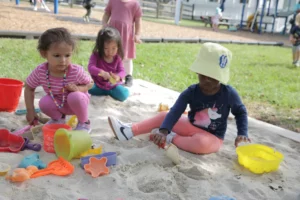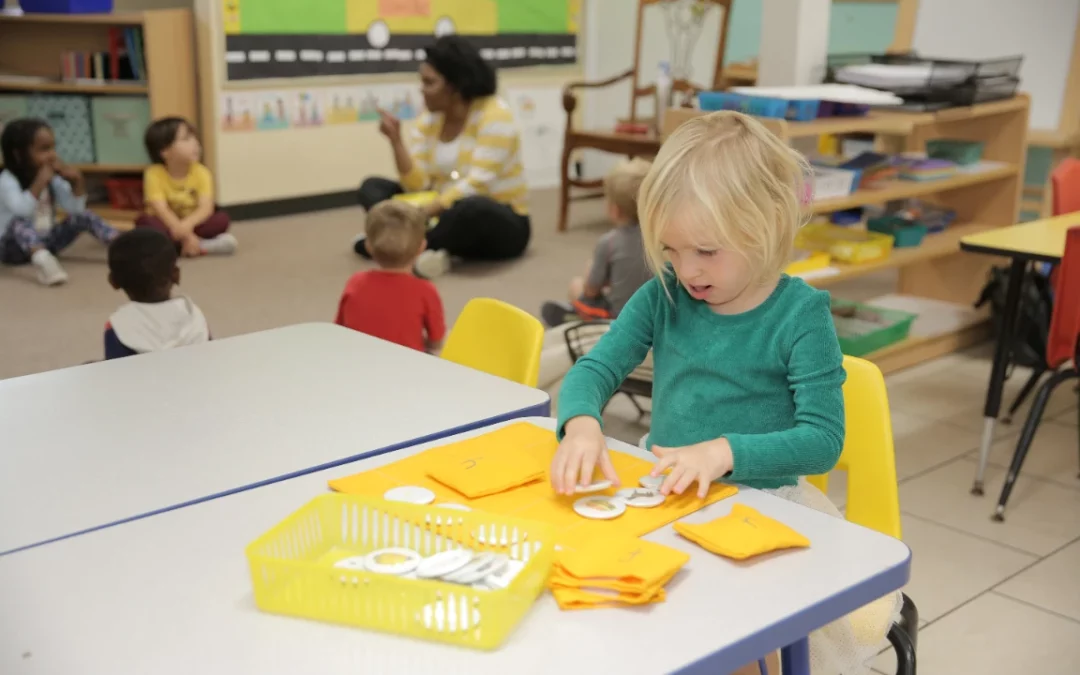 Parents often ask us how to continue the Montessori approach to learning at home. There are many ways you can continue and reinforce the approach for your child outside of the classroom. The purpose of this article is to introduce you to some of the ideas, once you get the hang of it you will start to develop your own solutions. First, lets start with an overview of what Practical Life is in the Montessori philosophy.
Parents often ask us how to continue the Montessori approach to learning at home. There are many ways you can continue and reinforce the approach for your child outside of the classroom. The purpose of this article is to introduce you to some of the ideas, once you get the hang of it you will start to develop your own solutions. First, lets start with an overview of what Practical Life is in the Montessori philosophy.
Practical life, in a Montessori classroom, exercises purposeful activities which help in the development of fine and gross motor skills, order, coordination, concentration and independence. These lessons also help to promote responsibility as well as grace and courtesy.
“Practical life” is the approach that Dr. Maria Montessori followed for children to acquire ‘daily living’ or practical skills they could use for the rest of their lives (e.g., zipping a zipper, pouring a drink, holding a pencil, etc.). With activities like the ‘pouring’ and ‘scooping’ lessons, the children are supposed to transfer items from left to right. This learning activity improves their hand-eye coordination; in addition, it prepares them for pre-reading and pre-writing as we write and read from left to right.
The five categories that Practical Life is divided into are Grace and Courtesy, Preliminaries, Fundamental Skills, Care of the Environment, and Care of Self. The following are just a few of the lessons/activities that can be found in the Practical Life area of a Montessori classroom:
Grace and Courtesy:
- Getting the teacher’s attention
- “Pardon me, please.”
- “Excuse me.”
- “Come in.”
- “How do you do?”
- Introductions
Preliminaries:
- Getting in and out of the chair
- Rolling and carrying mats
- How to walk around the mat
- Carrying a Tray
- Folding
- Carrying a Chair
Fundamental Skills:
- Pouring Lesson (liquid and solid objects)
- Spooning Lesson
- Stringing Lessons
- Sorting Lessons
- Transfer Lessons
- Tweezing Lessons
- Clipping clothespins
- Bolt and Nut Activities
- Setting the table
Caring for the Environment:
- Dusting
- Floor sweeping
- Floor mopping
- Hammering activities
- Leaf sponging
- Watering plants
- Brass and Silver Polishing (Metal)
- Table Washing
- Crumbing (Table sweeping)
Caring for Self:
- Snap Frame
- Button Frame
- Buckle Frame
- Hook and Eye Frame
- Lacing Frame
- Safety Pin Frame
- Hand washing
- Stringing Beads
- Cutting Activities
- Tying Knots
- Threading a Needle
- Sewing Large Buttons
- Weaving Burlap
- Unweaving Burlap
- Fruit cutting (strawberries, bananas, etc.)
- Preparing snacks
How can you continue this Montessori methodology at home?
Now that we have gone over the basics of Practical Life in the Montessori classroom, how can you continue this practice in your own home? There are many ways to reinforce the Montessori methodology at home, and it all begins with reinforcing your child’s independence. Ok, let’s introduce you to a few examples to get you started!
- Take care of their belongings – When going to or from school, have your child carry in their backpack on their own. When you get home from school, ask your child to take out their lunch box and any papers that they have done for that day. Doing this each day will get them into a routine as well as help them when they go to school because they are encouraged to do the same thing there. This will also teach them the importance of taking care of their belongings and teach them responsibility for their own things.
- Help in the kitchen – Have your child help set up and clear the table at dinner time. Once they get the hang of this, try having them assist with washing dishes or drying them, help with wiping down the dinner table, and sweeping the floor.
- Bath time – When it is time for your child to take a bath or shower have them put their dirty clothes in the hamper and pick out their own clothes.
- Getting dressed– In the morning have your child put his/her own clothes on.
- Bed time – Ask your child to make their own bed
- Lunch – Have your child be responsible for putting their lunch boxes in their backpacks, encourage them to remember to do this on their own rather than when you remind them.
These are just a few simple examples, once you get the hang of them you can improvise and come up with endless possibilities. Some of these suggestions may seem like a lot for your child, but they can do it! Lessons like these help your child understand that they are a part of a unit and they have responsibilities to not only help themselves but also help in the household. Remember, it is very important in the Montessori classroom that our children gain independence and that they build the confidence that they are able to do things on their own.
[masterslider id=”3″]

